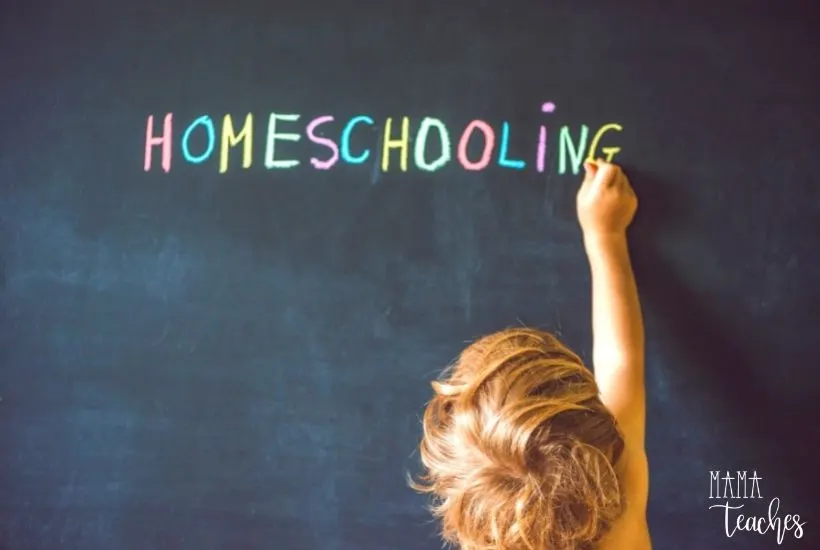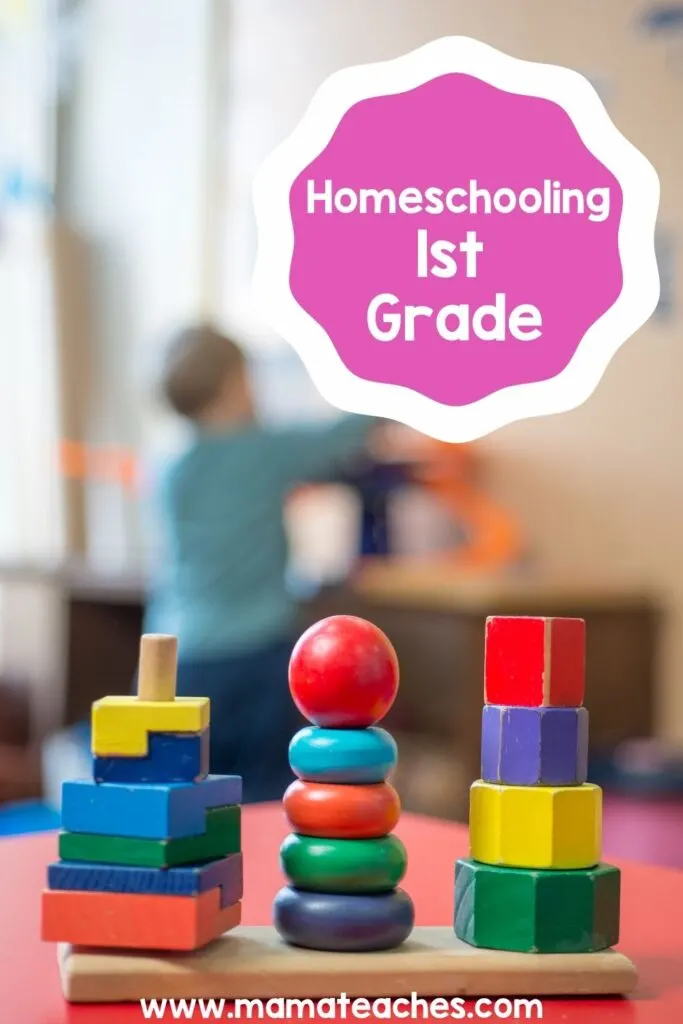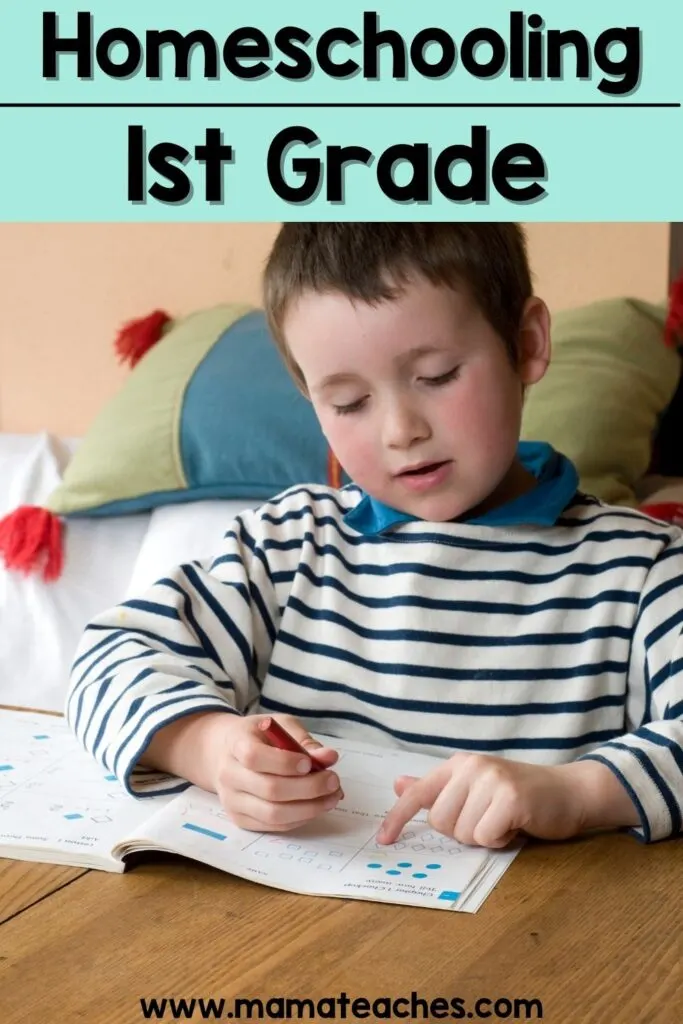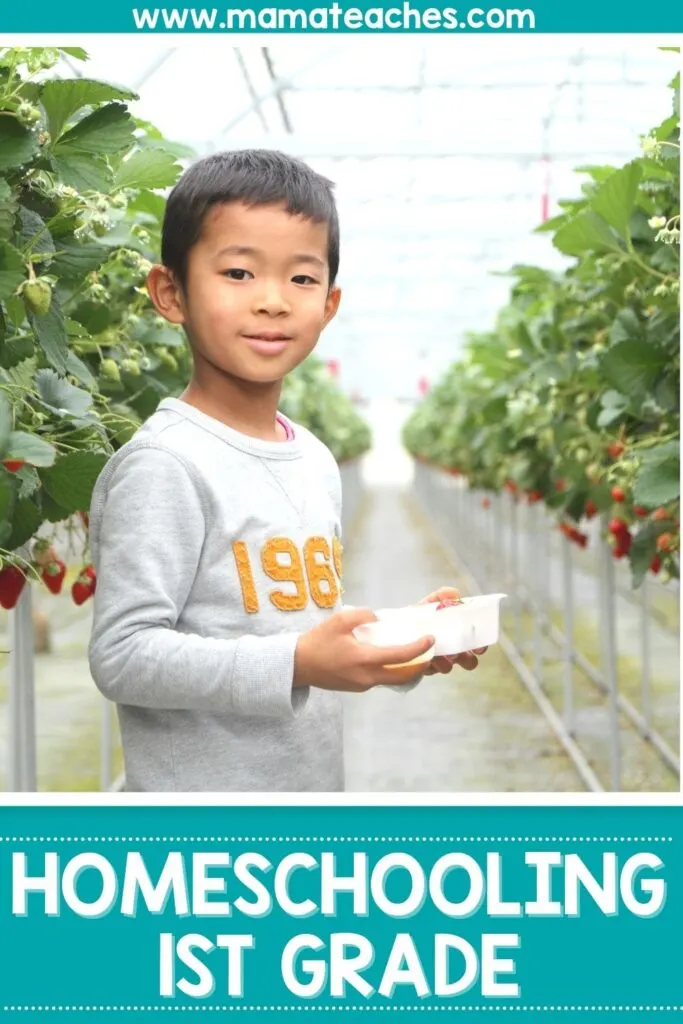First grade is the first formal year of school, and you want it to go well.
Can you do this at home?
Absolutely!
We’ll cover the groundwork on homeschooling 1st grade.

This article contains affiliate links to things that you might like.
Essentials for Homeschooling First Graders
Kindergarten is the on-ramp to school, but first grade is the year where you put all the pieces together.
It’s a wonderful time of exploration and learning and a great year to homeschool.
But what does homeschooling a first grader entail?
Read on to find out what to teach, how to teach it, and how to plan your school day.
First Grade Learning Objectives
A homeschooling first grader will learn all that kids in school learn (and often in less time).
So what are the educational goals of first grade?
The most important objectives concern the skill subjects: reading, writing, and math.
You want a firm grasp of the fundamentals so you can move forward.
Keep in mind that all children learn at different rates–this is one of the reasons to homeschool!
You can move as fast or as slow as you need.
By all means, reach for the objectives, but celebrate progress at every stage.
Math
- Number recognition and counting to 120
- Grouping objects in 10s and 1s
- Simple addition and subtraction (up to 12)
- Using manipulatives to decode word problems
- Counting by 1s, 5s, and 10s to 100
- Counting by 2s to 40
- Identify/make coin and bill values
- Tell time on a clock (to the nearest hour or 30 minutes)
- Identify basic shapes
- Understand basic measurements (inches, feet, etc.)
Reading
- Reading short vowel CVC words
- Know up to 100 sight words
- Begin to read words starting with blends like bl, cr, and st
- Begin to read words that end with silent e
- Can tell you some important details about a story they have heard or read
Spelling
- Can spell conventional one-syllable CVC words
- Can spell name
- Can spell some high frequency sight words (e.g., the, said)
Handwriting & Mechanics
- Able to write first and last name
- Can write all the letters in manuscript (aka print)
- Write from top to bottom and left to right on page
- Put spacing between words
- Start sentences with capital letters
- Put end marks after each sentence
- Begin writing short related sentences (aka paragraph)
Science (these will vary but may include the following)
- Know seasons and types of weather
- Can identify basic parts of the human body
- Learn about different types of animals and biomes
- Explore elements of the natural world
Social Studies (these will vary as well)
- Understand basic unit of family
- Learn about community roles
- Understand past & present (focusing on personal and family history)
- Explore various aspects of culture (family, food, clothing, shelter, language)
- Identify traditions in your own family

First Grade Homeschool Curricula
With so many curriculum options available, you can find something that will check the boxes you are looking for.
Here are some recommendations for religious, secular, and free curricula.
For a complete list, check out our Ultimate Curriculum Directory.
Religious
Sonlight
If you have the money, this all-in-one Christian 1st-grade program has everything–36 week lesson plans and instructor guide, lush picture books, hands-on math, spelling and phonics instruction…basically every single thing you could possibly need to homeschool first grade.
Five-in-a-Row
If you are looking for something enchanting and a bit different, Five in a Row is a literature-based unit study that covers social studies, language, art, and applied math and science.
You will need to supplement with a reading and math program of your choice.
While this basic program is not religious, you can purchase a Bible supplement that works with the program.
Secular
Spectrum Workbooks
My kids love workbooks (some kids do, and apparently I have three of them) and these workbooks were my saving grace.
They have workbooks for reading, writing, math, science…you name it!
CTC Math
This digital math curriculum has 4-7 minute lessons and then digital worksheets where you can track your child’s progress.
Your child can move at the pace that is right for him.
Free
Easy Peasy Homeschool
This program is popular and free! It is an online program with links to lessons in all the subject areas.
To learn more about it, check out our review of Easy Peasy.
CK-12
If you are on the lookout for free STEM resources, cK-12 is a nonprofit site that has interactive textbooks for math and science.
Miniature Masterminds
This site offers free printables for every subject.
If you have a child who likes worksheets, you have hit the jackpot!

First Grade Homeschool Schedule
A homeschooling first grader should have lots of room in her schedule.
While you should have some sit-down instruction time, you want to continue to explore, craft, play, cuddle, and read together.
Here is a sample day, although this will look different for every family:
7 am Wake-up, get dressed, eat breakfast
7:45 am Morning Circle Time (read a short story, poem, or Bible lesson together, stretch, sing–whatever centers you!)
8 am Reading lesson (20 minutes)
10-minute break
8:30 Math lesson (20 minutes)
10-minute break
9 am Handwriting practice (10 minutes) and other fine motor activities like crafting, building, cutting, or folding (20 minutes)
9:30 Walk or outside time/nature study (30 minutes)
10 am Spelling and writing (30 minutes)
10:30 am Hands-on science, math, or social studies activity (30 minutes)
11 am Literature read aloud or social studies (20 minutes)
11:30 Lunch
After lunch, allot time for independent reading, quiet play with music/audiobooks, outings to the store, park, or library, outside time, board games, and learning apps.
Change it up to fit your schedule!

The Homeschooling First Grader Guide
Homeschooling first grade is fun and doable when you know what to do and what to expect.
It need not be stressful; make sure to intersperse your school day with moments to breathe and moments to play (for you and your child).
All those learning objectives?
They will happen when you cover a little each day.
The most important thing is to enjoy this precious time!
